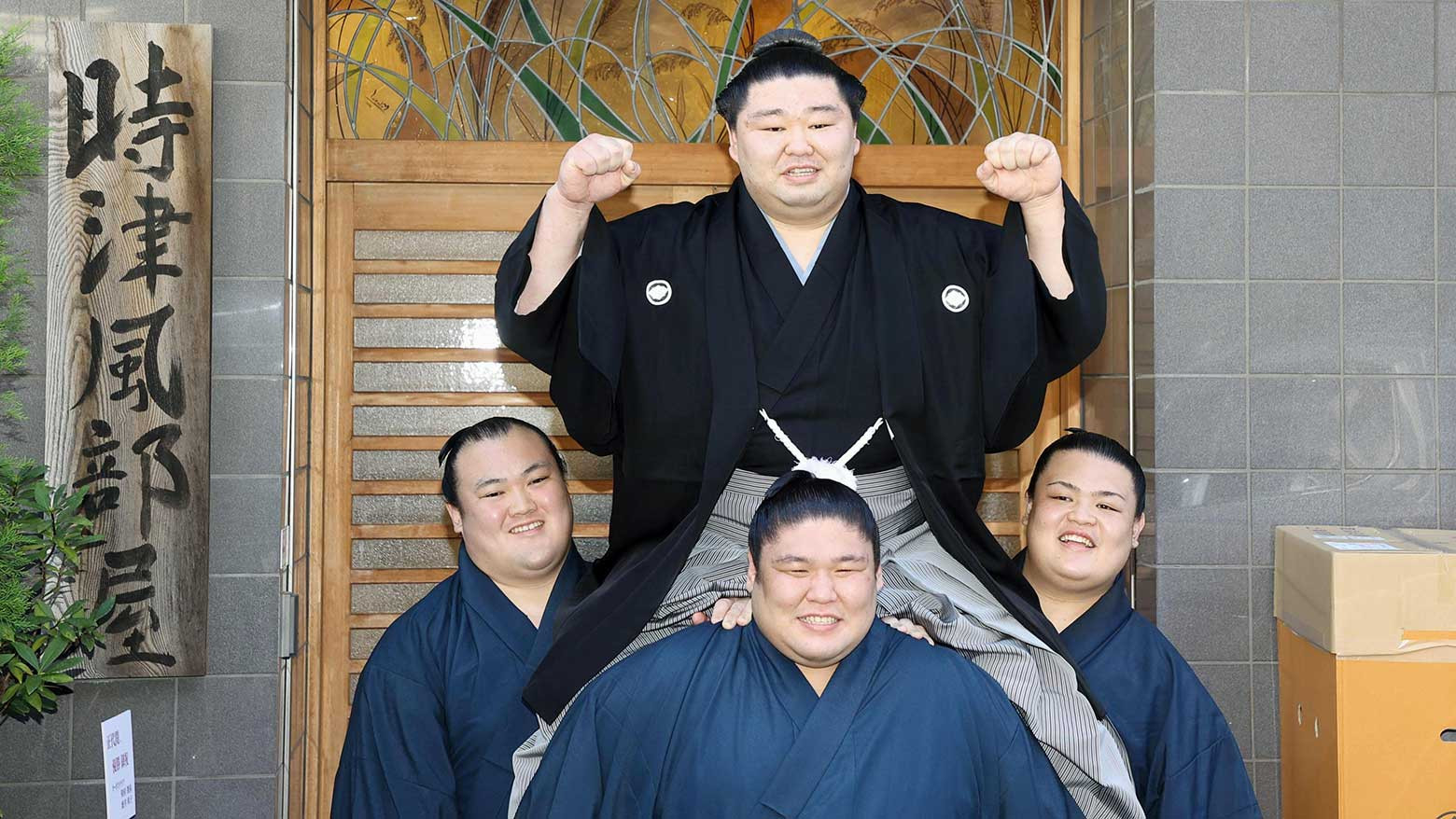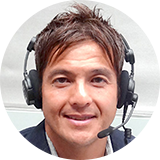Anti-coronavirus measures still in place
Just like any other recent tournament, the September competition was held with The Japan Sumo Association taking all the necessary precautions to deal with COVID-19 related issues. One of them was to limit the number of spectators to a quarter capacity or 2,500 people per day. Fans were also asked to wear face masks at all times and refrain from cheering vocally, but instead show their support by clapping their hands and holding up signs showing the names of their favorite wrestlers.
The Emperor’s Cup up for grabs
Typically, those in the upper echelons lead the championship race, but this one was nothing close to ordinary to say the least. After just six days there wasn’t a single wrestler who remained unscathed. Moreover, at the half-way point, nine men were tied for the lead each with two losses in an indication of how topsy-turvy this contest was.
But gradually the contenders and pretenders started to separate, and at the end of Day 13, two wrestlers shared the top spot with just two days to go. They were Shodai who’s competing at the third-highest rank of Sekiwake, and Tobizaru, a rank-and-filer who was making his debut in the top division. On Day 14, Shodai won his match to remain at two losses, but Tobizaru got beat which enabled Shodai to gain sole possession of the lead heading into the final day.
The showdown -- Shodai versus Tobizaru
On the final day the two contenders, Shodai and Tobizaru faced-off. Each of them had a lot at stake. If Shodai beat Tobizaru he would clinch the championship. On the other hand, Tobizaru was aiming to knock off Shodai to force a playoff.
The showdown lived up to its hype and didn’t disappoint. Right off the bat Tobizaru attacked Shodai by fiercely pushing him to the edge, but Shodai rallied and shoved the rookie back to the other end of the ring. Tobizaru used his speed and seized an advantageous double inside grip to try to finish off Shodai. But Shodai resisted and countered with a last minute thrust down to take the match and the Emperor’s Cup for the first time.
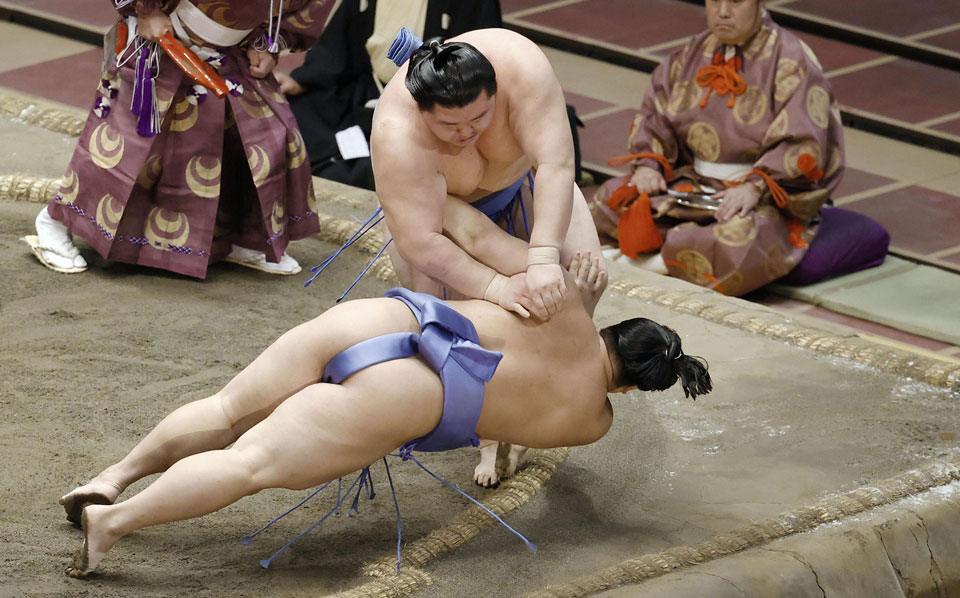
Shodai’s triumph was not only celebrated by the fans in the stands, but also by many people in southwestern Japan where Shodai hails from. That includes of course his parents. They all watched the final day of action at a public viewing venue in Kumamoto Prefecture.
Needless to say, Shodai’s top division championship has made the people of Kumamoto ecstatic and proud, as he’s become the first native to ever to accomplish the feat.
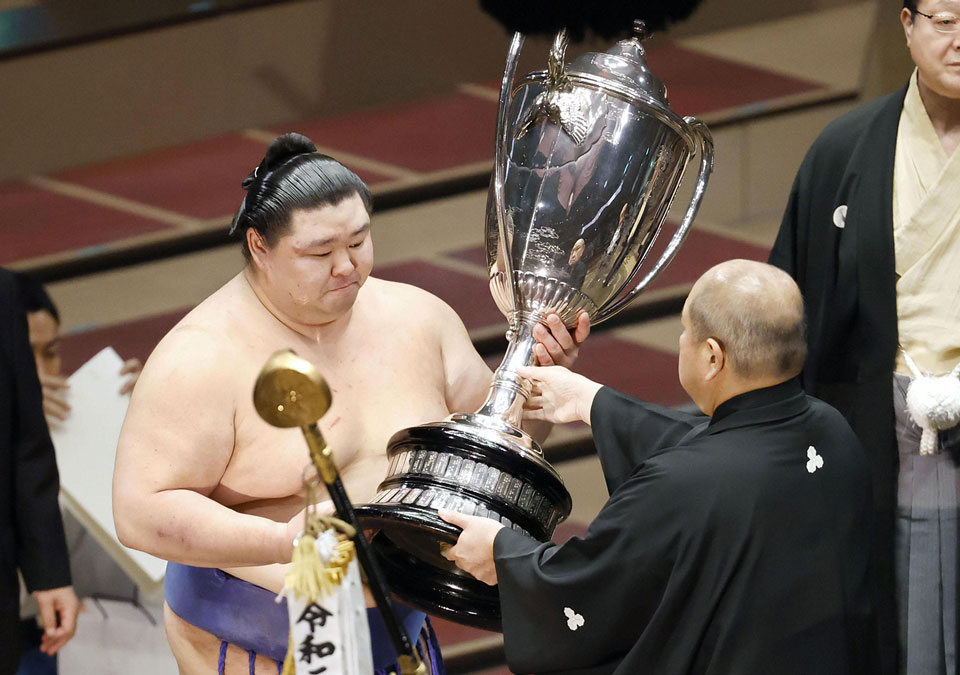
Shodai gets promoted to Ozeki
A few days after winning his first Emperor’s Cup, Shodai made headlines again by receiving a promotion to the second-highest rank of Ozeki for the November Grand Sumo Tournament. In his acceptance speech, the 28-year-old said that he will try his best not to disgrace the rank of Ozeki. He also said that he will pursue further success by maintaining complete faith in himself and his approach to sumo.
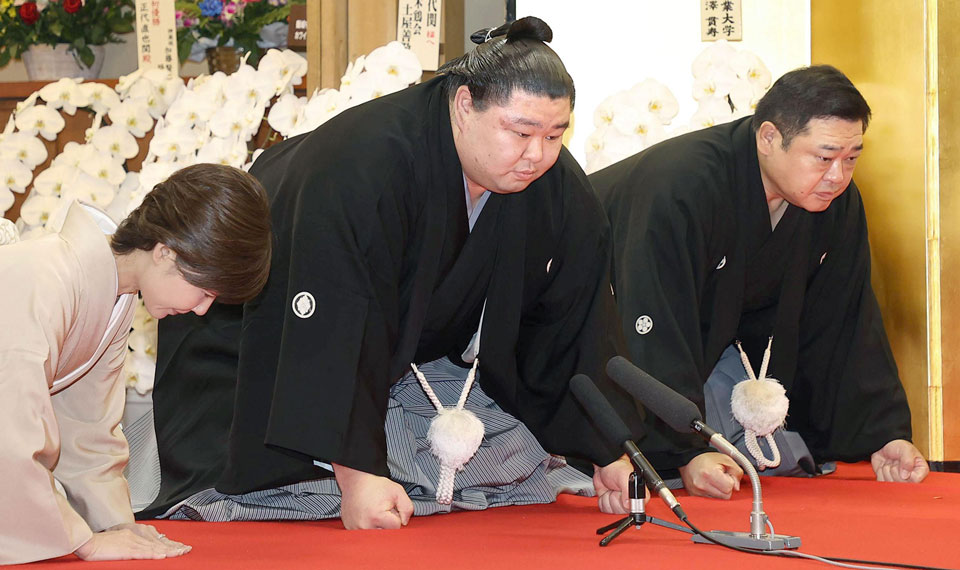
Shodai’s long awaited championship and rise to Ozeki made me feel good too. I met him for an exclusive interview back in March. My only concern was about his lack of positive thinking as he had once said during a press conference that he’d rather not fight anyone strong. So, when I interviewed him, I asked what he thinks of being dubbed the negative-minded wrestler. He told me that he prefers to be thought of as having a reserved personality. He said in a way it might prove helpful, because it allows him to surprise his opponents in the ring. Well, surprising his foes is exactly what he did during the 15-day September meet. Watching him closely for the past year, I’m so impressed with his mental maturity and how motivated and diligent he’s become. If he can continue his good work ethic and believe in himself with a positive mindset, you might see him even rise to the top rank of Yokozuna in the near future.
Rookie sensation Tobizaru
Shodai may have walked away with the Emperor’s Cup, but Tobizaru stole some of the limelight for taking the championship race down to the wire. Furthermore, Tobizaru offered some rare excitement for the fans, as he was vying to become the first rookie in 106 years to win the top division championship. The last and only wrestler to accomplish this feat was Ryogoku way back in 1914.
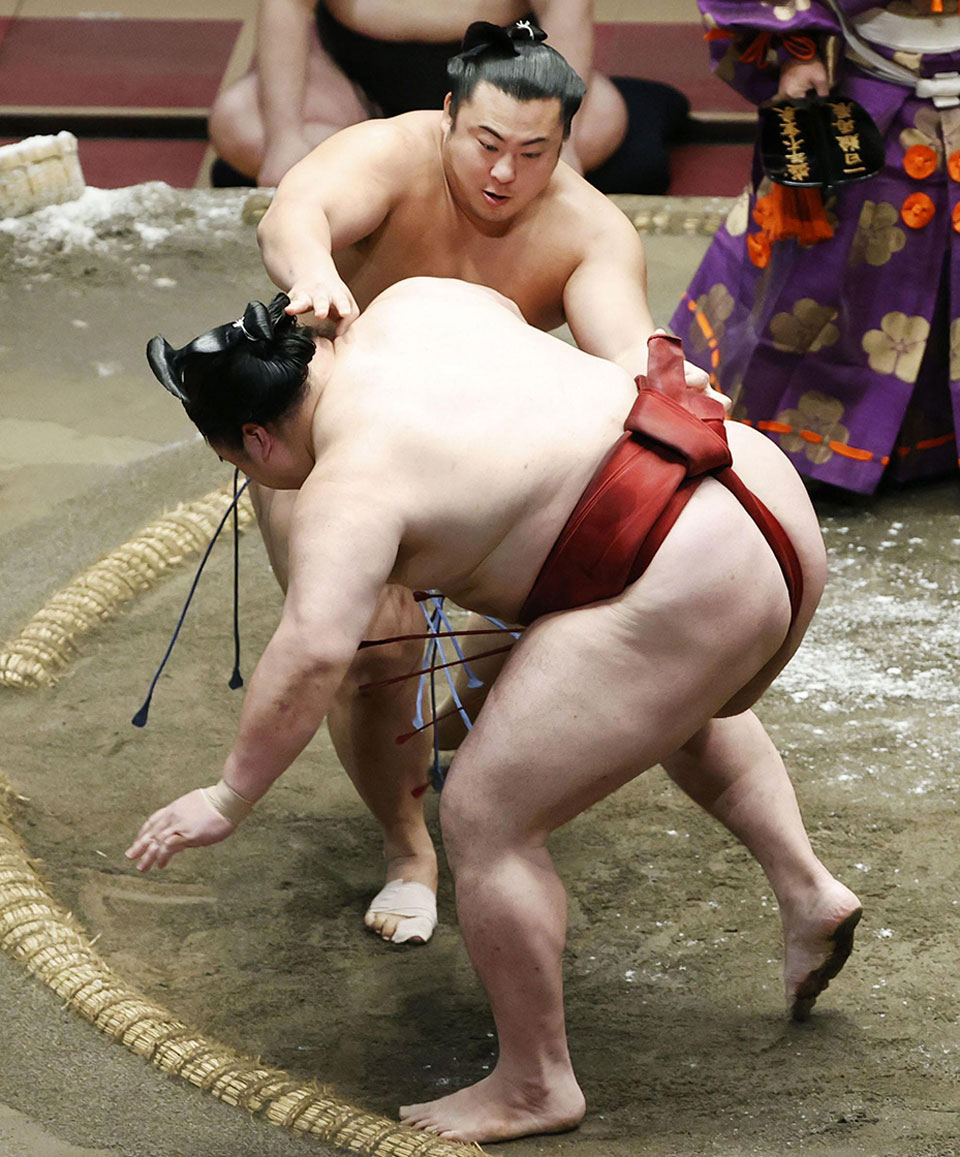
Tobizaru stands 175 centimeters tall and weighs 131 kilograms which makes him one of the smallest combatants in the top division. But, he’s proven that a lack of size can be overcome by hard training and strong will. Tobizaru fell short of realizing his improbable championship, but he’s shown that nothing is impossible. The rookie sensation can keep his head up for bringing excitement on a daily basis and for coming so close to writing a new chapter in sumo history.
Failing to meet expectations
Both Ozeki champions, Asanoyama and Takakeisho, competed with hopes of winning their second championship respectively, but it didn’t happen.
Asanoyama was so fired up before the tournament as he said it’s simply a championship or bust for him this time. But, things didn’t go according to his plan, as he got off to a rough start by losing three matches in a row from the opening day. However, he showed his grit and bounced back to win 10 consecutive matches to stay in contention. His effort didn’t bear fruit this time, but I’m sure he’s going to learn from his mistakes and come back stronger the next time.
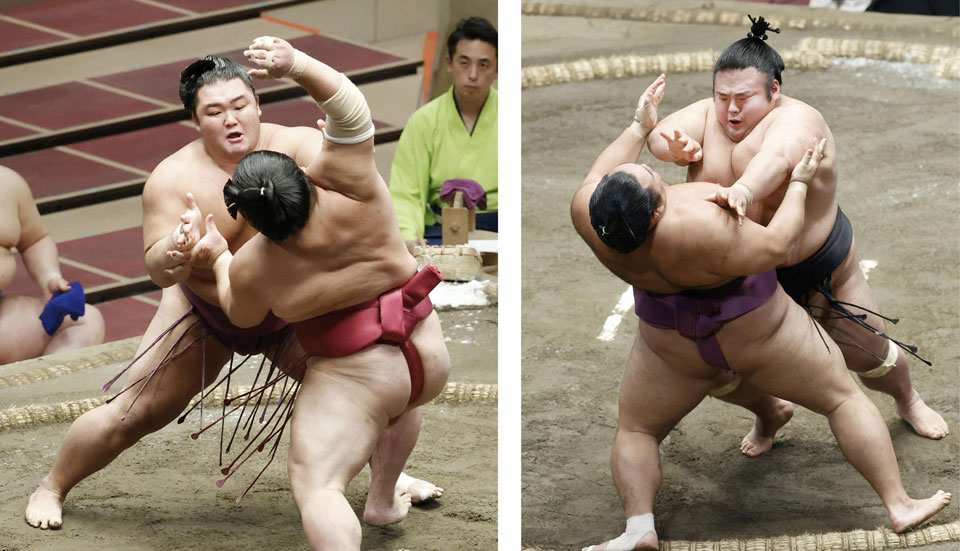
A lot of people were skeptical of the other’s Ozeki-ability to compete at a high level in Tokyo, because Takakeisho had just recovered from a knee injury which had forced him to withdraw from the previous tournament in July. When he was asked about his physical condition before the tournament, he simply said, “never better!” And he wasn’t kidding. Takakeisho blew most of his opponents away with his signature thrusting attack and kept breathing down Shodai’s neck pretty much the entire time. But, his loss to Shodai on Day 13 cost him the championship as he finished the contest with 12 wins and three losses which is one fewer win than Shodai’s final record. Like Asanoyama, Takakeisho will be a man on a mission in the upcoming competition.
Missing in action... again
Many of you must be wondering what happened to the two reigning Yokozuna grand champions since I’ve yet to mention their names. Well, to put it simply, both of them were MIA, missing in action due to their respective injuries. The alpha dog Hakuho had endoscopic surgery on his right knee and did not recover in time. The other Yokozuna, Kakuryu was mired with severe back pain and said he’d be a no show too. It’s the first time in 37 years for both Yokozuna to be absent from the outset of a grand tournament.

Upon completion of the September tournament, the Yokozuna Deliberation Council members met with the sumo elders and expressed their strong displeasure of the two Yokozuna’s recent performances. Hakuho’s withdrawn from the competition 11 times in the past three years. For Kakuryu it’s even worse as he’s sat out five of the past six tourneys. Many agreed that the clock is ticking and said the Yokozuna tandem better bring their “A-game” and perform like true champions the next time they step into the ring. Otherwise, they say that they’ll have no choice but to suggest the two Yokozuna announce their retirement.
Special prize selection very questionable
As always, special prizes were given to those who contributed in making the September competition a huge success.
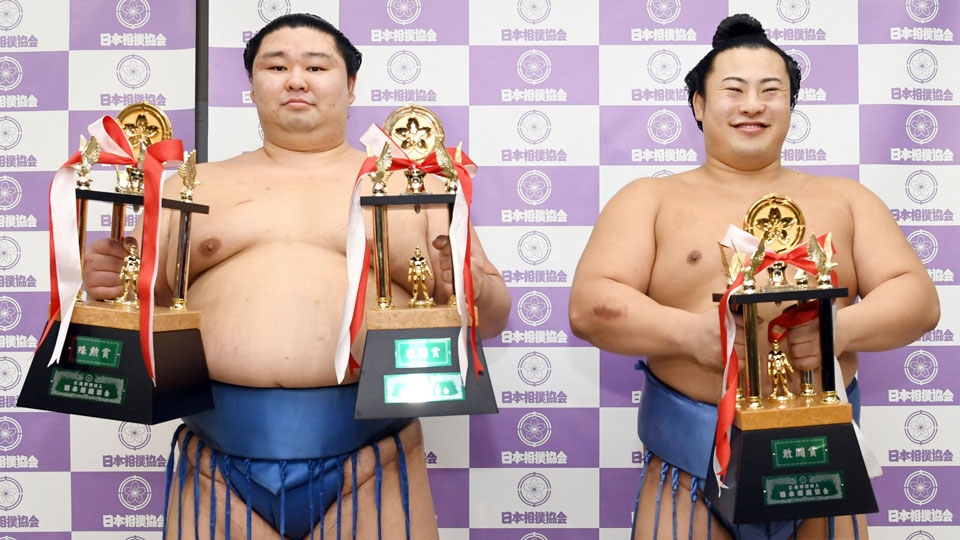
The tournament champion Shodai not only took home the Emperor’s Cup but also left the competition with the Outstanding Performance Award and the Fighting Spirit Prize.
Rookie Tobizaru received the Fighting Spirit Prize too for his relentless effort to contend for the championship until the very last moment.
Now, what shocked me was that these two were the only recipients of the special prizes this time. I mean what about guys like Takanosho, Wakatakakage and Onosho who all stepped up and impressed the fans with their double-digit winning record performances? Without their presence the September tournament would’ve been dull at best. I think I speak for every sumo fan in saying that the sumo association was too stingy in its special prize selection, because it failed to recognize and reward those who really should have been given a ton of credit.
2020 finale outlook
Less than two months from now is the final grand sumo tournament of the year, the November tournament. It usually takes place in southwestern Japan, in Fukuoka, but the venue has been changed to Tokyo to prevent any chance of the sumo association members contracting or spreading the coronavirus during their travel and one month stay in Fukuoka.
In November, everybody’s eyes will be on the newly promoted Ozeki champion Shodai. Will he continue his momentum and make a run at another championship? If he can, he’ll quickly become a legitimate candidate to move up to the highest rank of Yokozuna. Or will the weight of so much pressure and responsibility on his shoulders make him flinch? We’ll find out all the answers when he makes his Ozeki debut in November.
With no question, the combatants who must make their presence felt again are the two Yokozuna, Hakuho and Kakuryu. Do they still have what it takes to perform at a level that’s required for Yokozuna?
This year’s final 15-day sumo tourney gets underway on Sunday, November 8 at Ryogoku Kokugikan in Tokyo.
